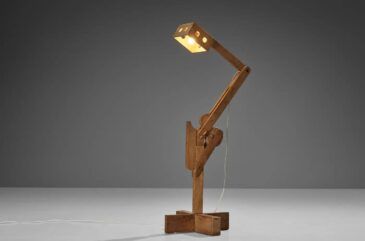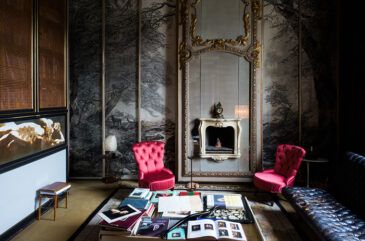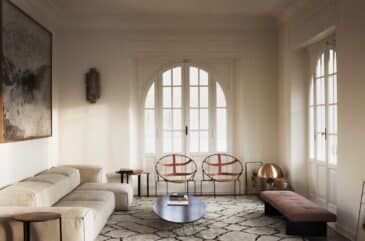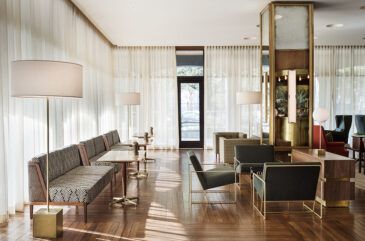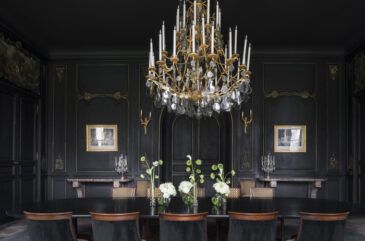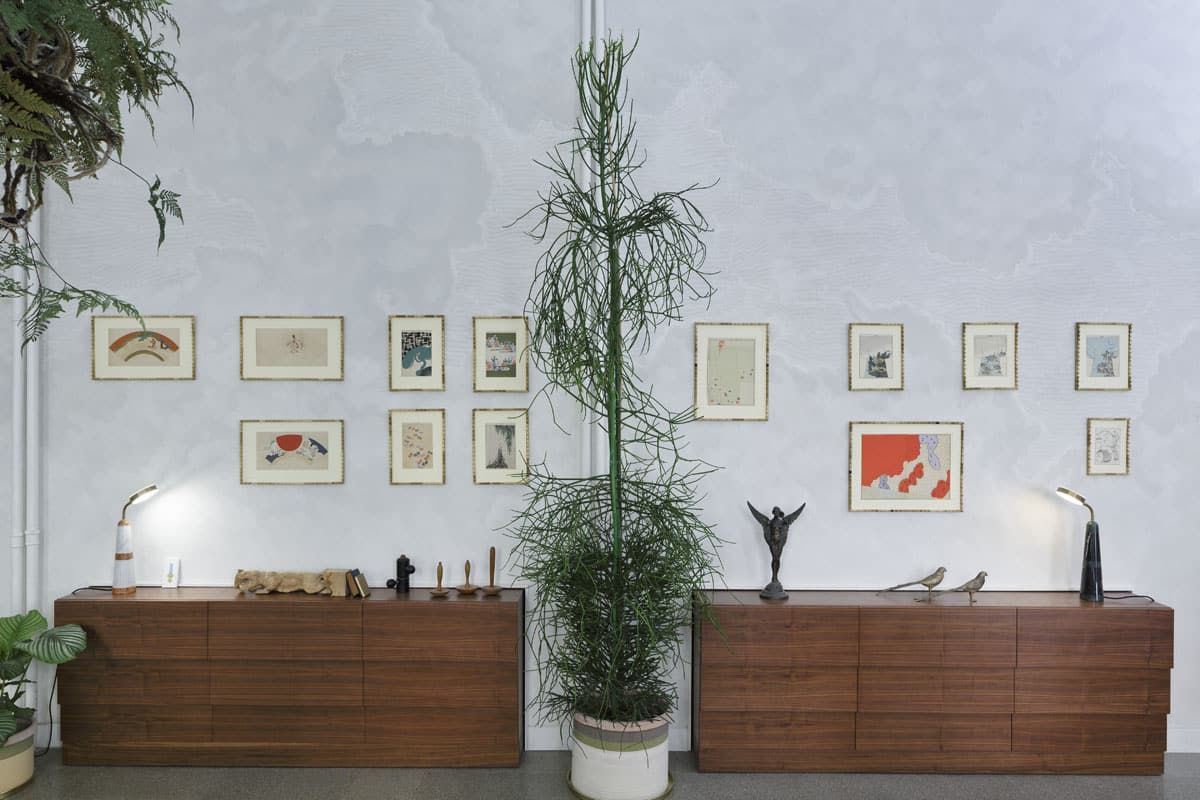
If the fantastical fabulist Italo Calvino had been a designer, he would have been Pietro Russo. The objects, furnishings and environments conceived by this Milan-based talent possess the same lightness, clarity and concentration that made the late maestro’s prose so wise and wondrous. In his short story collection Cosmicomics, Calvino speculated on scientific factoids both mundane and celestial, giving the reader an entirely new slant on the nature of life and the universe.
Russo’s designs are similarly rousing, transporting us into realms in which the particularities of a plant, the naïf charm of a rough-hewn ceramic and the technical refinement of orbital gear take on new meaning and resonance. He’s dubbed his poetic yet forward-looking style Esotico Futuribile, which roughly translates as “Exotic Futurism” — a title Calvino might well have coined.
The long and winding path that led Russo to design may explain his rare ability to conceive objects and rooms so rich in allusion and fancy. As a boy, he longed to study painting, but growing up in a large family of modest means in the ancient southern Italian sea town of Ostuni, he had to go to work at 13. Determined to fulfill his dream, he trained himself to paint and make ceramics while his father, a carpenter, taught him how to build.
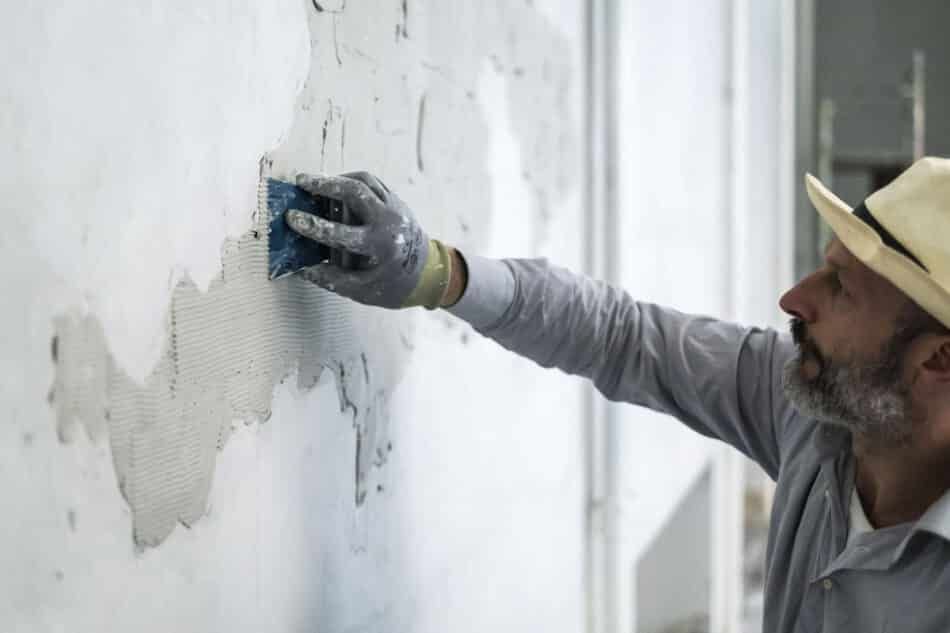
At 22, Russo finally got the chance to go to art school, where, after so many years of “practice,” he was able to expand upon his understanding of art theory. Further schooling in set design followed at the legendary Accademia di Belle Arti, in Florence, where Michelangelo and Cellini once studied. His education there enabled him to pursue a freewheeling life working in theater and film for such acclaimed directors as Liliana Cavani.
When he followed a girlfriend to Berlin, in the early 1990s, Russo found himself in a city in the throes of a creative rebirth. The art and design he saw challenged his classical Italian upbringing but also inspired him. He responded by making small objects, which he exhibited in local galleries. That is how he came to meet the acclaimed designer Piero Lissoni and, in 2002, to move to Milan to join Lissoni’s design team. Russo spent the next eight years in that office, honing his skills as both a designer and a professional. But he yearned to return to his research into the potential for handcrafted, deeply felt, yet forward-looking objects. In 2010, he left Lissoni Associati to set up his own office in a combined home, studio and design lab, which he describes below.
Tell me about your office/apartment duplex in Milan. Where is it, and why did you choose it?
I live in a six-hundred-square-foot duplex in an elegant nineteen thirties building in the Città Studi, a very nice residential area around the main building of the Politecnico di Milano. My design studio and the living/dining area are on the ground floor, and there’s a sleeping area on the floor above.
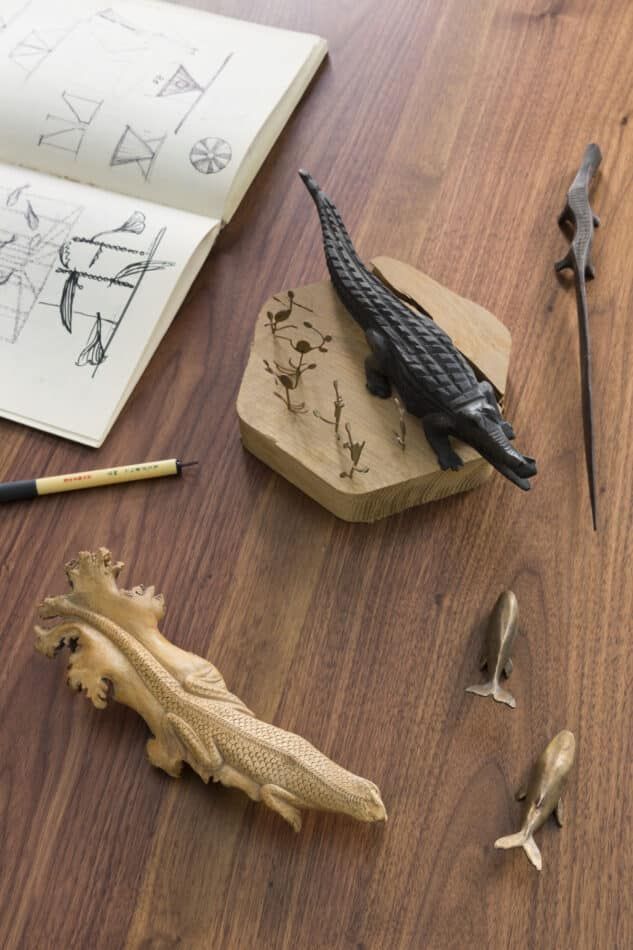
Did you conceive the interior as a stage set for your life?
I was digging into colonialism when I decided to move here. I was fascinated by cultural exchanges and fusions of styles. At the same time, I was researching the design of spacecraft, because the idea of humans’ one day landing on Mars intrigued me. Coming from those two paths, I tried to synthesize them into a unique concept that would gather two very distant aspects into a new language, a new form of expression. That is how I developed Exotic Futurism.
So, I live in this space like an actor on stage, keeping one foot in the past looking at colonialism, and the other in the future. All the furniture, which I designed, was inspired by colonial style, while the lighting fixtures reference space and the future.
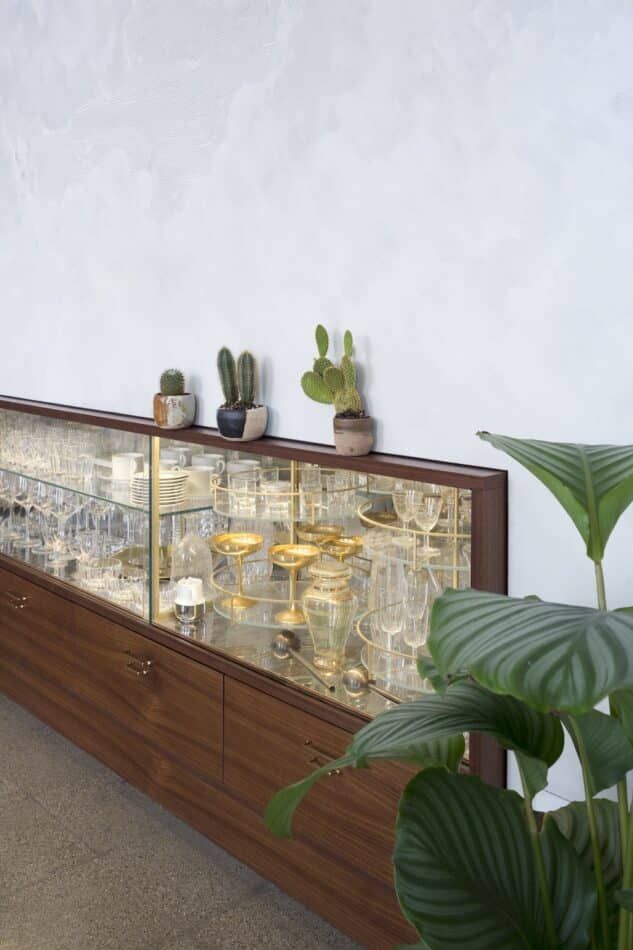
Did you design the vitrine in the portrait of you?
Yes, it’s an homage to the old glass cabinets from the early nineteen hundreds. In this particular case, I customized the design to fit perfectly into an already existing wall niche.
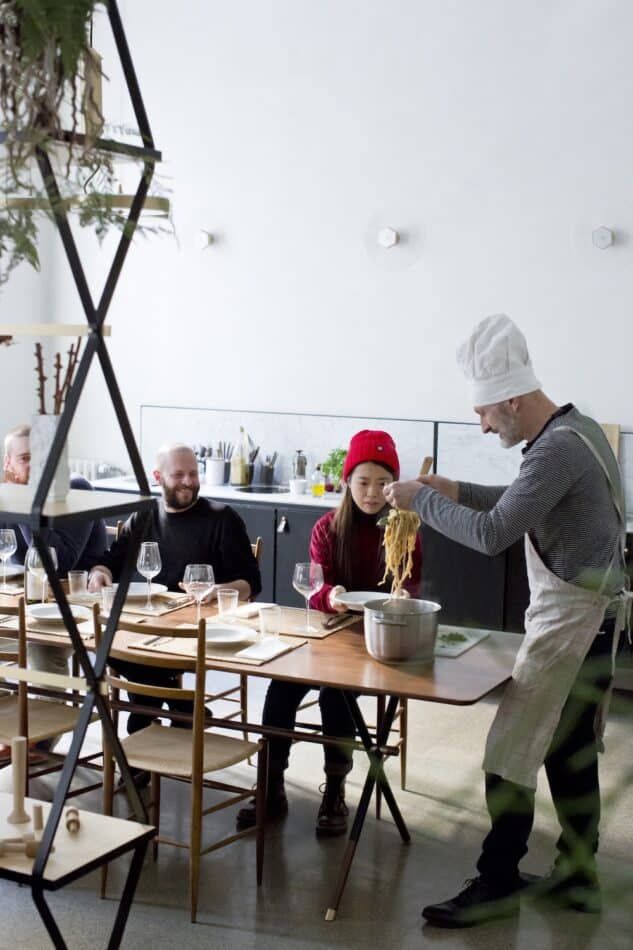
Are you a serious cook? Tell me about the furnishings in your kitchen — it looks like you have some classic pieces as well as your own designs. I’m especially curious about the sconces on the wall by your countertop.
I am a self-taught cook, but for a short period, I worked as a chef in a restaurant in Berlin. In this picture, I am cooking for a group of friends. The chairs are original Chiavarina: the archetype of Giò Ponti’s Superleggera. The Alma table, which I designed, is made of solid American walnut. The legs are distinctive. They cross and are very thin, with a brass joint, a detail that makes them look quite precious.
The sconces are part of the SAT collection, which is inspired by the spacecraft aesthetic, but they also resemble those classical sconces you find in late nineteenth-century ballrooms.
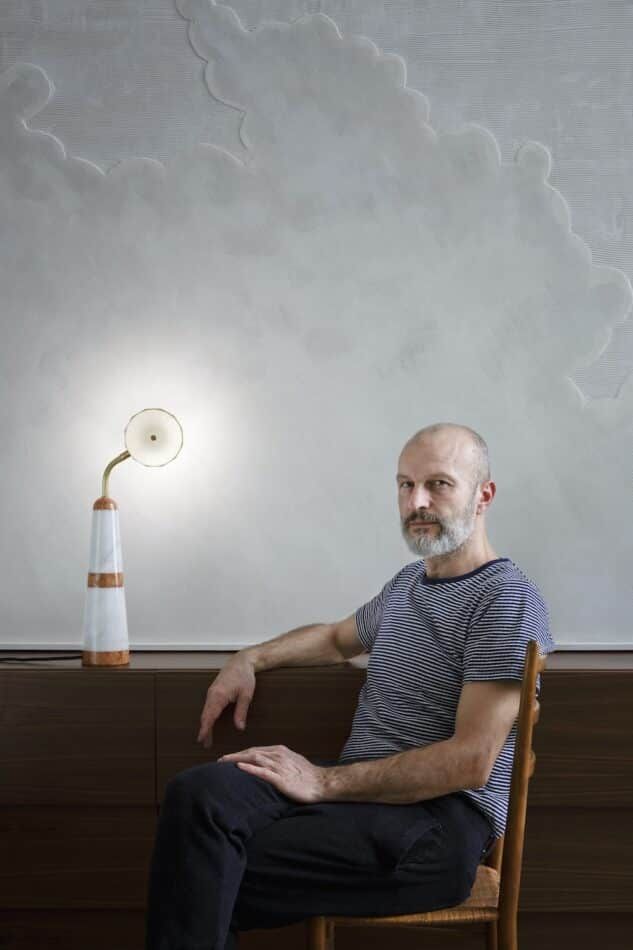
In your portrait, the wall looks like a frieze with clouds. Tell me about it and the lamp.
I created the wall myself. My inspiration came from looking at the typical engravings from the eighteen hundreds, often depicting landscapes with heavy clouds. I reproduced it with the technique called graffiato, which literally means “scratched,” employing different tones of white plaster to mimic the effect of an engraving.
The table lamp, which I designed in 2015, is from the SAT collection. Like the other pieces in the collection, it is inspired by a retro-futuristic spacecraft style. Somehow, though, the base of the lamp, which is made of marble, reminds me of the classical facades of Renaissance Florentine churches, like Santa Maria Novella and Battistero di San Giovanni.
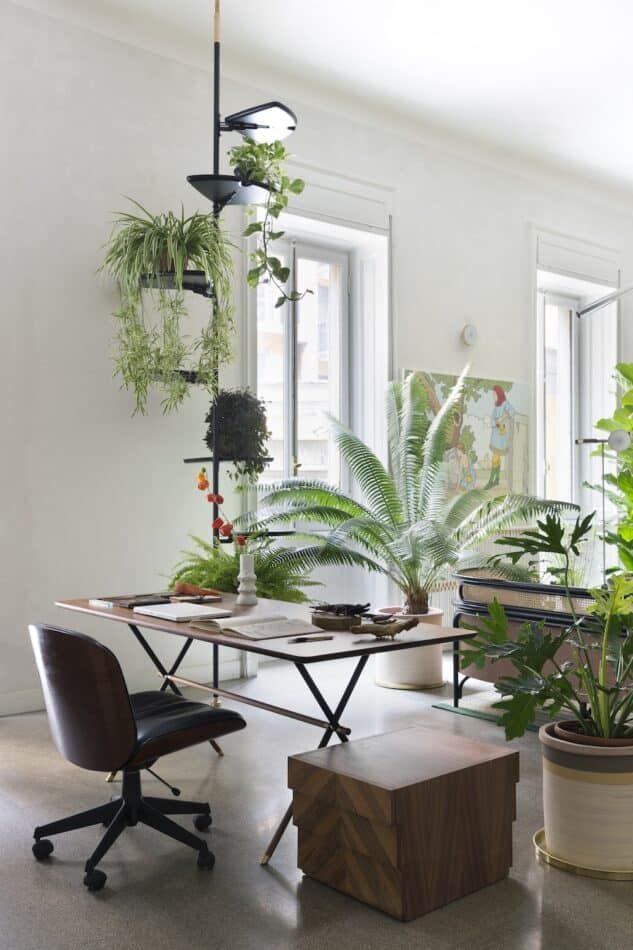
Do you feel every apartment should have plants in abundance? Did you design the handsome ceramic pots? I’m curious too about the plant stand.
I think nature should be a constant presence in daily life. In this case, the abundance is a necessity, a desire to make up for the lack of nature experienced when living in a metropolis.
The terracotta pots were hand decorated by me with lime. Called Gingko, the plant stand was conceived to extend plant decoration from the horizontal to the vertical, a way to create a form of living furniture. It’s named for the plant with the peculiar leaf. I like the shape and that it is a constant symbol in many different cultures, especially in the East. The stand is a personal interpretation of how a leaf can change its function and become a support.
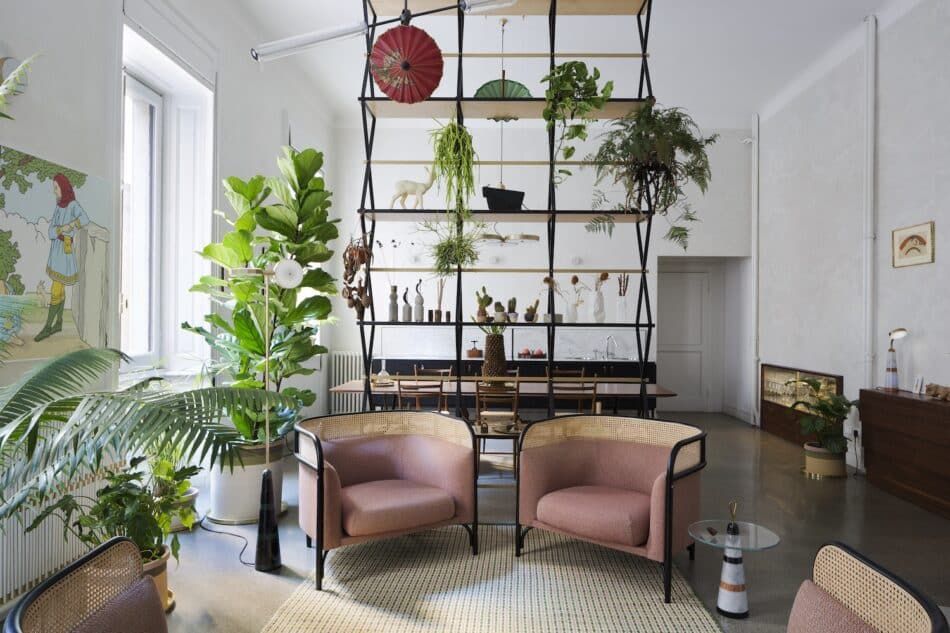
What inspired that chic étagère? And what about the other furnishings in the room?
I call the étagère Romboidale [“Rhomboid”], and if I may say so myself, it’s my masterpiece. I wanted to give the impression that the bookshelf/divider could magically grow and extend from the floor to the ceiling, almost as a retractable system.
I’ve always been fond of room dividers, because they offer a perfect separation of space in large environments, while organizing the room and providing a certain visual permeability. As to the sofa and the armchairs, they were designed by GamFratesi for Thonet. I chose them because they fit perfectly the colonial mood of the apartment, you might say the fil rouge of the space.
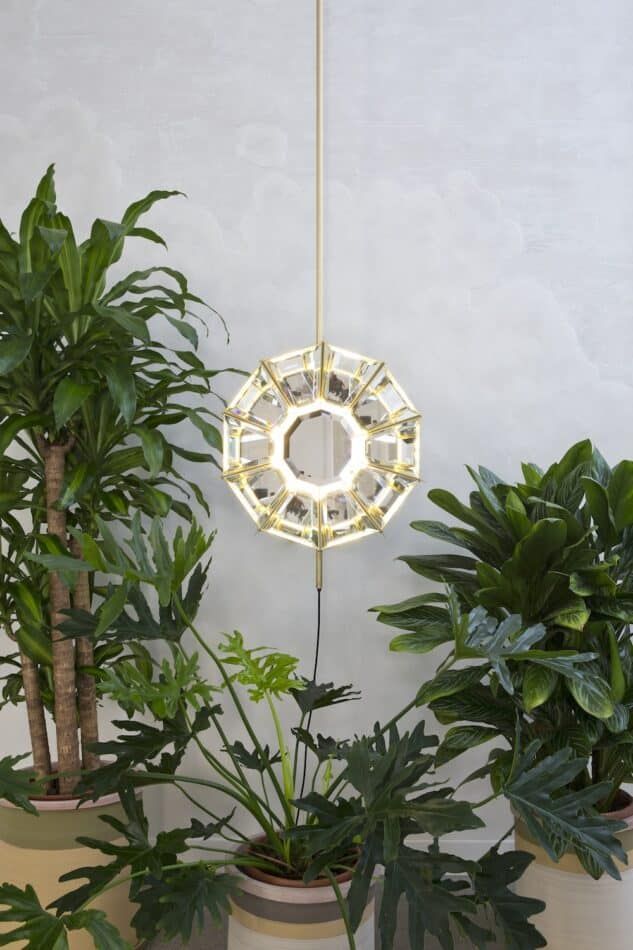
What’s the story behind the captivating Daffodil light?
Daffodil is a lamp inspired by the Caravaggio painting Narciso, which depicts a beautiful boy gazing at himself in a body of water before he drowns in his own image. It’s an allegory about the ego. I designed Daffodil as a system of polygonal mirrors that creates a kaleidoscopic game of reflections, so that the viewer is forced to reflect upon his own image and, yes, ego.
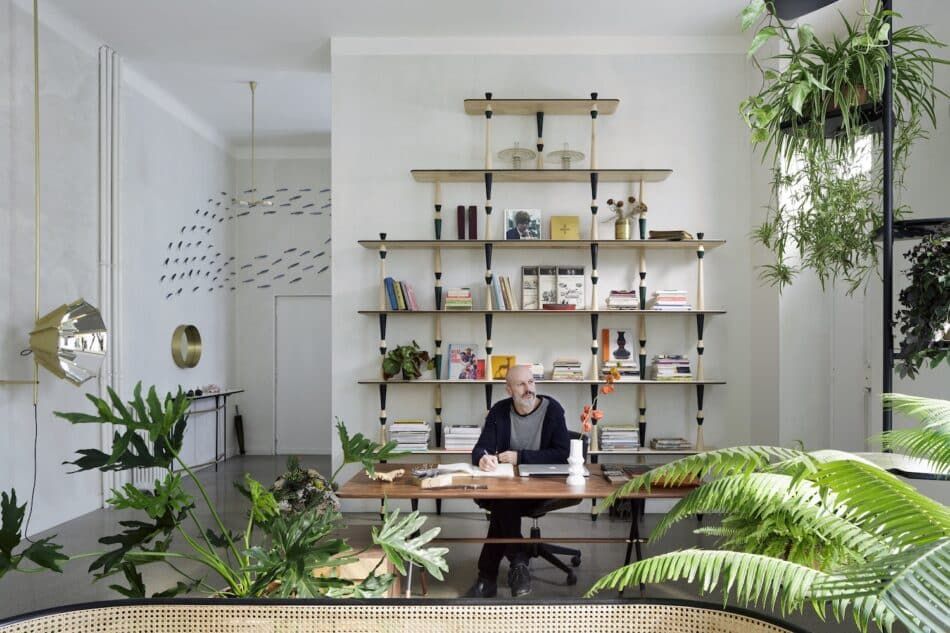
What inspired the bookshelves behind your desk? And tell me about the artwork on the wall of the entry. It is it a school of fish?
The Trabea bookshelf is an interpretation of a classic display from the nineteenth century, supported by columns and capitals. Here, the vertical elements are replaced with playful objects such as pins or wooden toys to give the unit a crisper appearance.
And, yes, there is a display of ceramic fishes in the entry. I find the synergy of animals moving simultaneously together very compelling. So here I express that principle in graphic form. I chose fish as the subject because of my interest in objects with a strong symbolic connotation.
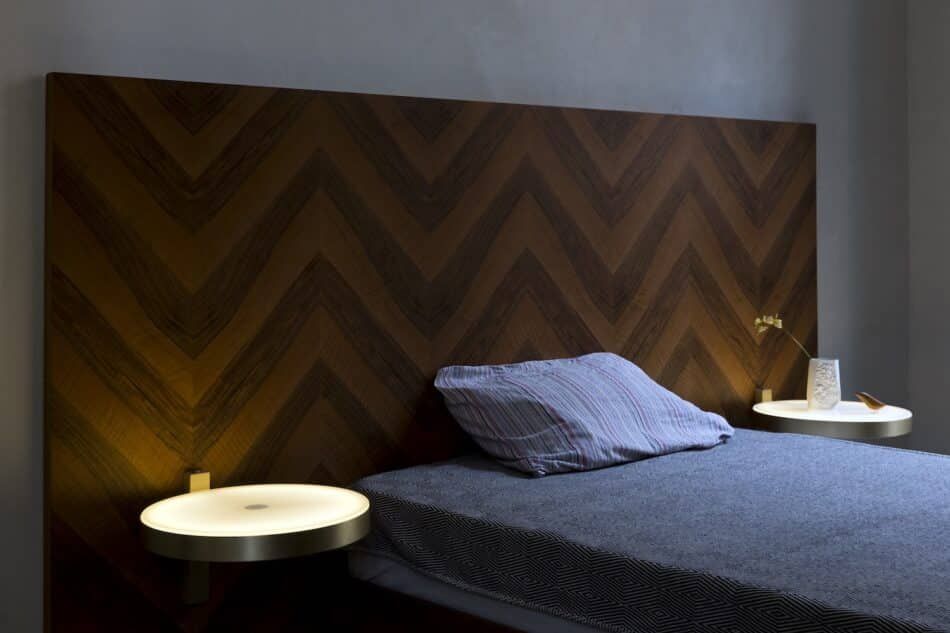
Finally, tell me about your bedroom. Did you design the headboard and the two side tables? They look illuminated. What inspired them?
In the bedroom, which is located on the second floor, I designed both the headboard and the nightstands, which are backlit. I was inspired by the hyper-accessorized bedrooms of the sixties and seventies, but with a twist of retro-futurism.
